“What kind of bird is that, Lizzy?” I heard Paul shout. It was our last hurrah before graduating from SUNY Oswego, so my friends and I decided to head out to Chimney Bluffs State Park on Lake Ontario one last time before we all departed.
I followed the vector of Paul’s outstretched arm to see a large bird soaring through the air, gliding along the contour of the bluff where we sat, with its wings outstretched. I squinted. The bird had soared directly into the sun, and I could barely see. “Probably a turkey vulture,” I said unenthusiastically. But as the bird emerged from the blinding rays, I saw the bright yellow beak, glistening white head, and chocolate brown plumage.
It was unmistakable; we were about 25 feet from a bald eagle. I jumped out of the grass, and my friends followed, as they, too, recognized this large raptor. We broke out in cheers and hollers that cut through the melancholy of our impending departure. It was an unforgettable moment, but one that probably wouldn’t have been possible without a man named Peter Nye.
Fast forward to today, I sit in a coffee shop waiting to meet with Nye, my wildlife management professor from a few semesters before. It had been hard to schedule a meeting with Nye, an opportunistic adventurer who seizes upon whatever outdoor excursion comes his way. Our meeting is sandwiched between a climbing trip and his volunteer work for Habitat for Humanity, which is soon to be followed by his trip to hike the 100-mile wilderness in Maine – what a retirement and certainly a reward for his quintessential career as head of the Endangered Species Unit for the New York State Department of Environmental Conservation!
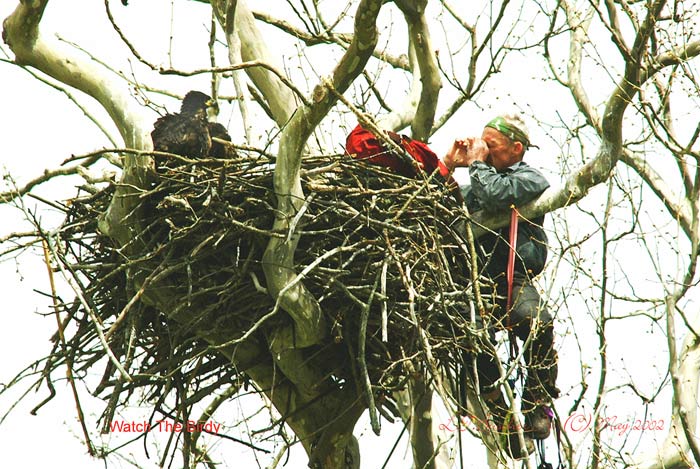
A Population at Risk
At the start of his career in 1974, the bald eagle population had plummeted due to the use of harmful pesticide DDT, which hampered the eagles’ ability to reproduce. “The eagle work was there,” said Nye. “There were no climbers, and no expertise. So, we got the spikes and the belts, and I developed the expertise.” Thus began a 13-year project centered around a falconry-technique called hacking, which involves climbing 100 to 125 feet up into the trees to harvest nestling eagles and then rearing and releasing them into suitable habitats to grow and eventually reproduce. Nye adapted this technique specifically to bald eagles with the help of Cornell ornithologist Tom Cade, who had some experience with the technique.
The first release site, and home to the world’s first bald eagle hacking tower, was located at Montezuma Wildlife Refuge on the northern end of the Finger Lakes’ Cayuga Lake. Each tower contained several caged compartments, where staff raised and cared for the eaglets. Eventually, the cages were opened, allowing the young eagles to begin to hunt and survive on their own. “No one had ever done this before with bald eagles. It was a complete crapshoot,” Nye said. Bald eagles are altricial birds, which means they are born in an undeveloped state and learn to hunt and feed from their parents. “It was hard to say at the time whether it would work,” he explained.
The DEC also worked with existing mated pairs by placing “dummy” eggs made out of plaster in their nests, which the adult eagles incubated and cared for. After the approximate two to four weeks of incubation time, staff replaced the eggs with bald eagle chicks. In essence, they were tricking the native pairs into rearing a hacked eagle chick.
With no idea if this approach would be effective or how long it would take to be successful, Nye embarked on a 13-year project in 1976. Just four years later, two eaglets were found 84 miles away from their release point, and they were reproducing! “They were brother and sister, but hey, I’m not asking any questions,” Nye said with a smile.
That is when the program took a larger-scale approach. In order to move the project to the next level, they needed to obtain more eaglets than any of the lower 48 states could provide, which left only one option – Alaska. He said, “There is a tremendous amount of planning behind this project: permits, proposals, convincing people it was socially acceptable, and you need funding.”
But when Nye and his team finally did arrive in Alaska, they mapped out the eagle nests, split them up, and divided them into two teams, who would climb up to the nests and harvest the eaglets. Nye reflected on the first challenge: “I got to the first tree, and it was this huge Sitka spruce. It was just a wall. That was a moment of reckoning for me. We had spent years planning and came all this way, and now, it was time to do it. There was nowhere to grab – it was just fingernails the whole climb up that tree.” The trip was ultimately successful, and thus, Nye returned to New York with 21 eaglets to be released in various predetermined locations.
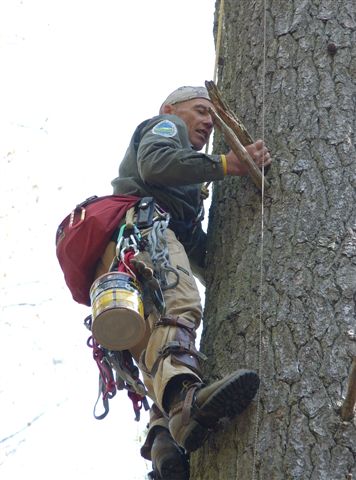
Saving a National Symbol
The hacking program was successful beyond anything they could have imagined. The goal initially was to establish 10 breeding pairs. In 2010, New York had 173 breeding pairs, fledging 244 young with a 10-percent rise each year.
With such success, it wasn’t long before wildlife managers in New Jersey, Pennsylvania, and Massachusetts were calling him up to ask for help in implementing the same programs in their home states. Nye’s work rippled through these neighboring states as he assisted in the development and implementation of plans tailored to their bald eagle populations. According to data reported by the USFWS, the bald eagle population in the lower 48 states has increased from 487 in 1963 to 9,789 in their last national survey, taken in 2006. As a result, the majestic bald eagle is no longer an uncommon sighting and is once again occupying our landscapes and enriching our experiences in the outdoors!
Nye reflects, “We picked out this national symbol. If we can’t preserve its ability to operate in the natural environment, what does that say about us?”
Lisa Cassidy
Lisa Cassidy is a graduate student at the University at Albany studying Biodiversity, Conservation, and Policy. Her connection to wild lands was forged young and ultimately led her to study wildlife and their intersection with human dominated landscapes, a critical point of compromise. Her specific research focus involves determining how grazed pastures managed in different ways impacts grassland bird populations.
Related Posts
2 Comments
Comments are closed.


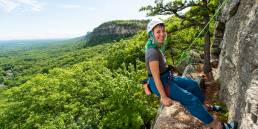
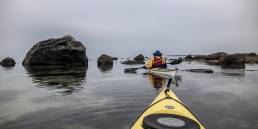
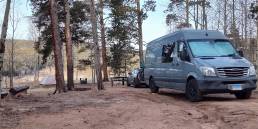
Great piece!!!
Growing up on the cliffs of the Great Lakes, I can say I have personally witnessed an increase in bald eagle sightings, thanks to Peter Nye…great piece on a great triumph in conservation history.